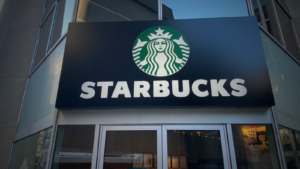This article will focus on the consumer discretionary sector, as many of its names appear poised for a continued rebound. I have identified three attractive names within this sector that exhibit notable upside potential and trade at attractive valuations, providing a crucial margin of safety. Thus, regardless of whether the market stabilizes or faces further turbulence in the coming weeks, I believe that these three names present compelling buying opportunities. Let’s take a deeper look!
Marriott (MAR)

First on the list is Marriott (NASDAQ:MAR), one of the world’s leading hospitality companies. It manages and franchises a wide range of hotel brands across more than 130 countries. Its portfolio includes well-known names like The Ritz-Carlton, St. Regis, Sheraton, and Westin, catering to a diverse clientele, including travelers and budget-conscious guests.
Despite the broader market turmoil, Marriott’s prospects remain robust, as evidenced by its strong Q2 performance. The company reported a 7% year-over-year increase in gross fee revenues, reaching $1.34 billion, driven by an increase in global Revenue Per Available Room (RevPAR), continued room growth, and higher franchise fees. Notably, adjusted EBITDA grew by 9% to $1.32 billion, while adjusted EPS registered an 11% rise to $2.50, reflecting the company’s solid operational execution during the ongoing travel industry boom.
While Marriott’s stock currently trades at a seemingly rich valuation of nearly 23 times earnings, this remains reasonable given the company’s growth prospects. With earnings per share (EPS) expected to grow in the double digits over the coming years, Marriott is well-positioned for a strong rebound following the stock’s recent dip. Given the stock’s tendency to attract premium valuation, I believe a multiple expansion is, in fact, rather probable moving forward.
Starbucks (SBUX)

Next, we have Starbucks (NASDAQ:SBUX), the world’s most famous coffeehouse chain. The company has become synonymous with premium coffee experiences, offering everything from classic espresso to one-of-a-kind seasonal drinks across its nearly 40,000 stores worldwide. Despite its iconic status, Starbucks shares have underperformed the overall market by a wide margin. The stock has declined by 23% over the past year, extending prior losses and pushing its price to levels not seen since 2019.
The company’s latest fiscal Q3 report was somewhat mixed, reflecting some of the ongoing investor concerns. Global comparable store sales fell 3%, with declines seen across critical markets like North America and China. Total revenue dipped by 1% to $9.1 billion, while operating margins also contracted due to increased promotional activity and investments in employee wages and benefits.
On the positive side, however, Starbucks continued its global expansion, opening 526 net new stores during the quarter, bringing its total to 39,477 locations. The opening of new stores partially offset the same-store sales decline, which is evident in the softer dip in total revenues. The Starbucks Rewards loyalty program also grew, with U.S. active members increasing by 7% year-over-year to 33.8 million.
Following its prolonged downturn, SBUX stock is now trading at about 22 times this year’s expected EPS, which I find to be a compelling valuation. Assuming the company finds its footing sooner than later, this multiple presents a significant opportunity, especially given the strength of the brand and its overall moat. These factors alone justify a premium price for the stock, which is not reflected at its current price levels.
Tractor Supply Company (TSCO)

Last but not least, we have Tractor Supply (NASDAQ:TSCO), a leading retailer catering to rural and agricultural needs. Offering a wide range of products, from livestock feed and farming equipment to pet supplies and home improvement items, it operates nearly 2,500 stores nationwide and has become the go-to place for rural lifestyle products.
Although TSCO stock is trading near its 52-week highs, it has yet to fully rebound from the recent pullback. In the meantime, the company’s Q2 report was solid, showcasing resilient numbers despite the somewhat shaky agriculture products industry. Revenues grew by 1.5% year-over-year to $4.25 billion, driven by new store openings and robust seasonal merchandise. Gross profit also rose by 2.7% to $1.56 billion, with the gross margin even improving to 36.6% thanks to lower transportation costs and controlled cost management.
Comparable store sales saw a slight decline of 0.5% due to a decrease in transaction count, though a modest increase in average ticket size partially offset this. Operating income was steady at $561.5 million, and diluted EPS increased by 2.6% to $3.93, which, again, is commendable given that specialty retailers struggled over the same period. With earnings growth likely to re-accelerate over the medium term, TSCO stock appears attractively priced at about 25 times this year’s projected earnings.
On the date of publication, Nikolaos Sismanis did not hold (either directly or indirectly) any positions in the securities mentioned in this article. The opinions expressed in this article are those of the writer, subject to the InvestorPlace.com Publishing Guidelines.
On the date of publication, the responsible editor did not have (either directly or indirectly) any positions in the securities mentioned in this article.
Nikolaos Sismanis is a professional research analyst with five years of experience in the field of equity research and financial modeling. Nikolaos has authored over 1,000 stock-related articles that focus on uncovering deep value opportunities, identifying growth stocks at reasonable valuations, and shining a spotlight on overlooked international equities.
